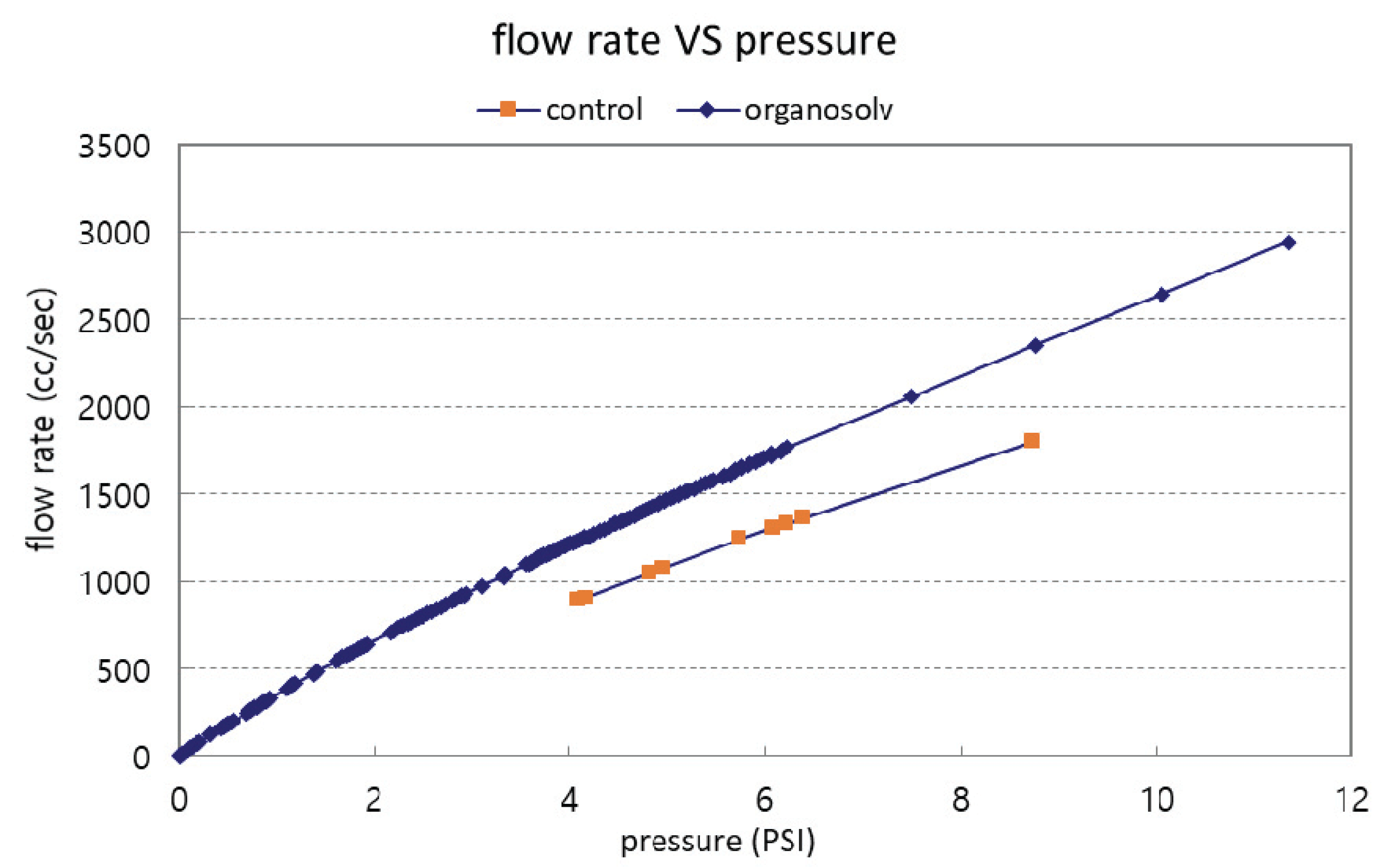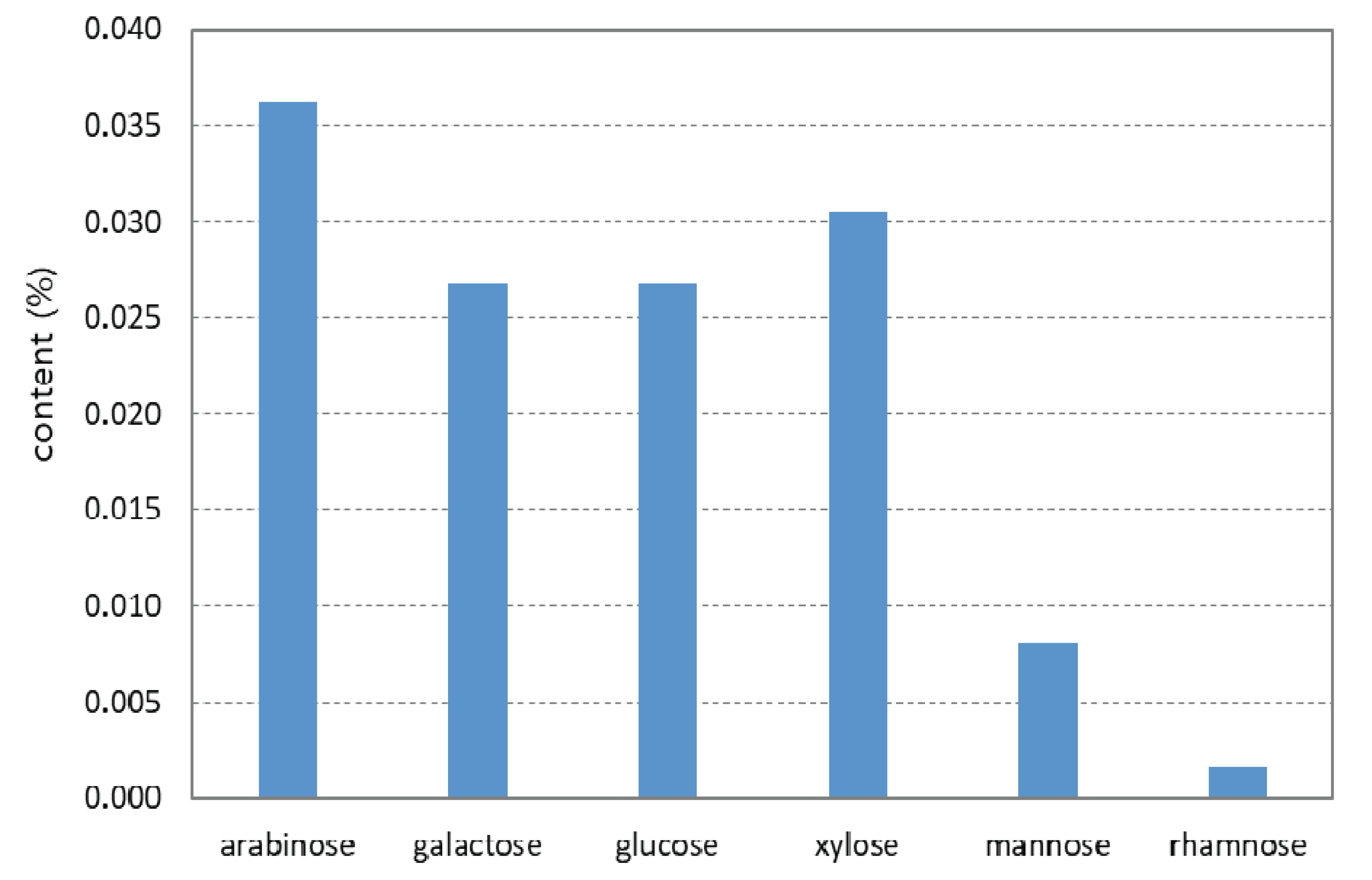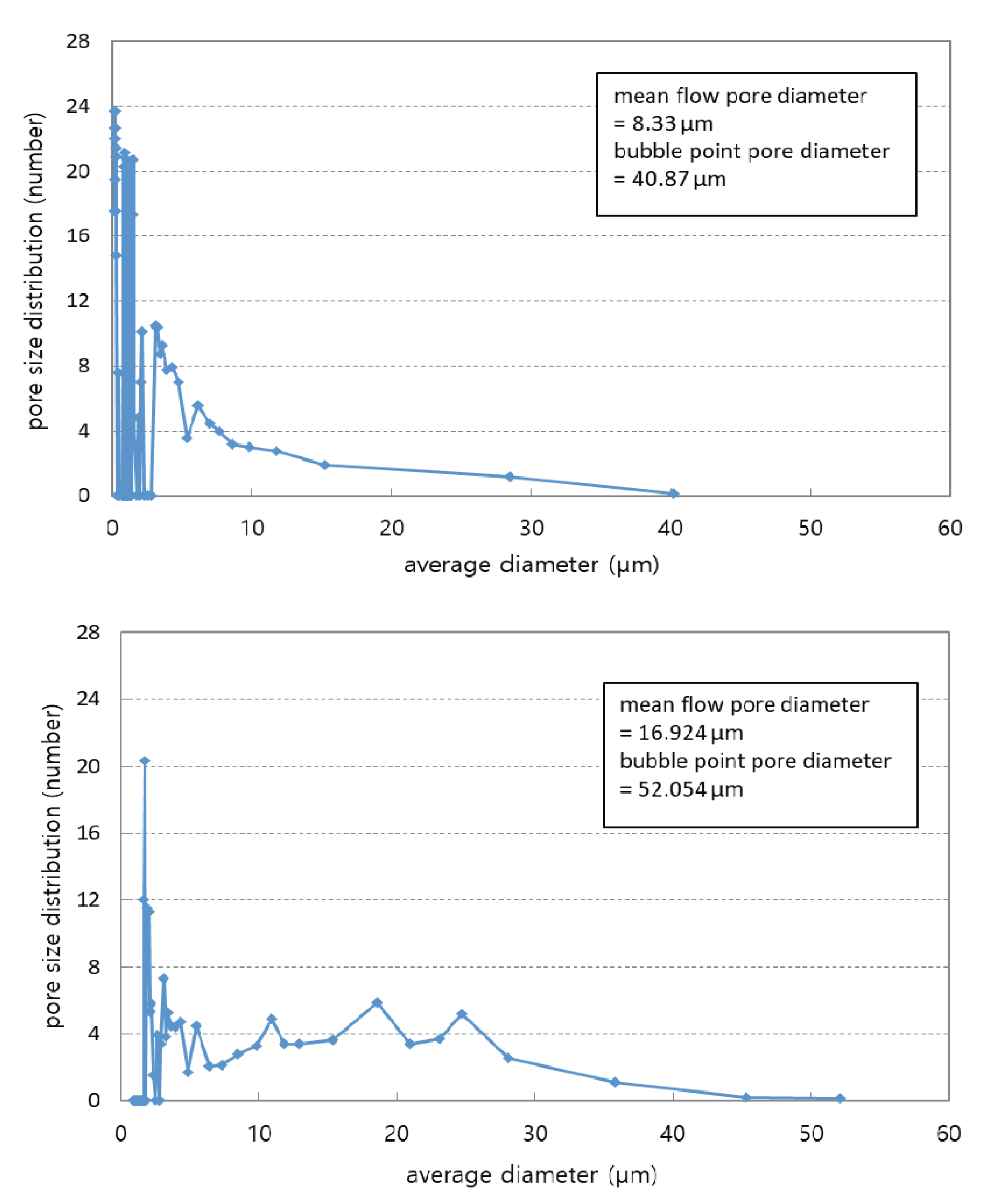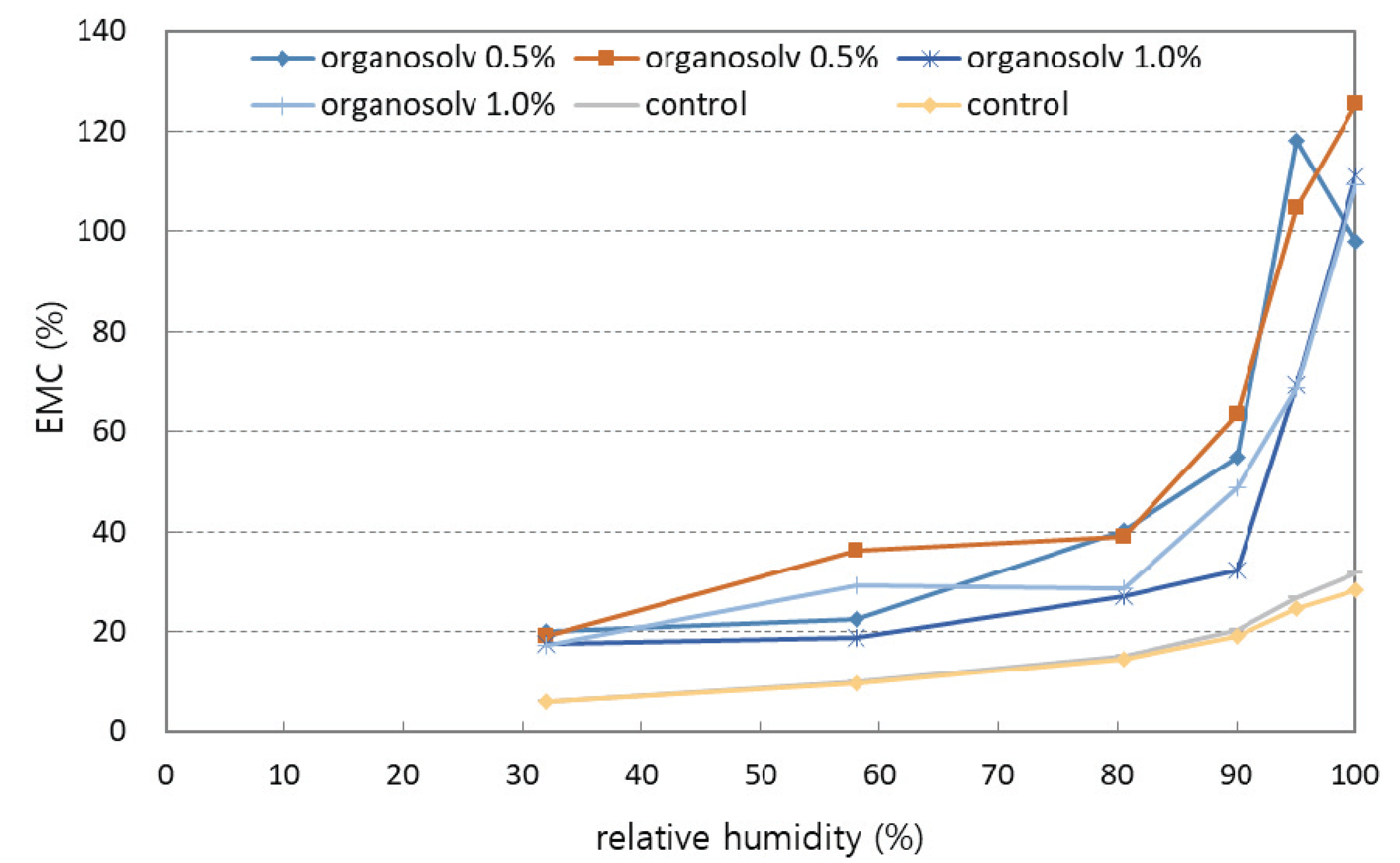1. INTRODUCTION
Interest and research on ethanol extraction production from lignocelluosic material like as wood are increasing and the possibility has been proved (Jang et al., 2016). However, it is difficult to extract the cellulose, which is available as a raw material for bioethanol from the wood because wood is a complex polymeric material consists primarily of cellulose, hemicellulose and lignin, with a minor proportion of extractives and these components combined effectively (Koo et al., 2011; Kang et al., 2012).
Several pretreatment technologies were developed in order to improve the extraction process, and various studies are being conducted on pretreatment of woody biomass. Among them, organosolv pretreatment was a pretreating method of effectively removing lignin and xylose in order to effectively acquire glucose by the enzymatic saccharification of pretreated biomass (Mark and Humphrey, 1984; Roland et al., 2010; Jang et al., 2016). When ethanol and sulfuric acid were used as solvent and catalyst, lignin macromolecular were easily dissolved into solvents as forms of low molecular weight fragment even though low reaction temperature, under 160 °C (Kim et al., 2015). Thus, mitigation of cell wall complexity as well as expansion of pore size could be achieved by elimination of lignin and hemicellulose fraction after organosolv pretreatment (Koo et al., 2011).
In the view of changes of wood properties by organosolv pretreatment, Kang et al. reported (2010) that the organosolv pretreatment improve the air permeability of yellow poplar wood in longitudinal direction and improve the sound absorption coefficient of yellow poplar wood in cross sectional surface on the high frequency range. In addition, in order to use wood as housing acoustic material, the hygroscopicity of wood should be considered.
However, studies on the changes of wood by organosolv pretreatment have been still insufficient. In this study, we investigated the influence of organosolv pretreatment in the air permeability and moisture absorption of yellow poplar specimens by comparing between control and organosolv pretreated specimens.
2. MATERIALS and METHODS
A 20 years-old yellow-poplar (Liriodendron tulipifera) tree grown in Chodanglim, Jeollanamdo, Korea was harvested and cross-cut. The cross sections with the diameter of 29.9 mm and the thickness of 10 mm were prepared. The annual ring widths and weights of them were measured in order to minimize the variation of log cross sections and compared and selected homogeneous log cross sections as specimens. The rectangular parallelepiped specimens with dimension of 20.0 mm × 20.0 mm × 50.0 mm (radial × tangential × longitudinal) were prepared for measuring the moisture absorption of wood based on the method of saturated salt solution.
Specimens were impregnated in the solution including ethanol of 50 % (v/v) and sulfuric acid catalyst of 1 % (w/w) with the reaction temperature of 110 °C for 15 min. Here, the stainless steel batch type reactor was used in case of small log cross section specimen for measuring air permeability, and an autoclave was used for rectangular parallelepiped specimen for measuring moisture absorption. Here, the reactor has maximum capacity of 1,000 ml, made by SUS316 stainless steel. Paddle type impeller, heating jacket, thermocouple and pressure gauge were installed and the temperature and stirring speed were adjusted by the controller (Hanwoul Engineering Inc. Gunpo, Gyounggido, Korea).
After the pretreatment, specimens were dried in a desiccator and the weight reduction was measured. 50 mm long specimens cut from 320 mm long specimens were oven dried and left in six desiccators for 1 month and their weight were measured and then oven dried. Then, the moisture content and moisture absorption rates were calculated.
After the organosolv pretreatment, liquid fraction were separated through a 0.45 lm hydrophilic PTFE syringe filter (Advantec Co., Tokyo, Japan), and analyzed by HPLC (HP 1100 series, Agilent Technologies, Santa Clara, CA, USA). The HPLC was equipped with an Aminex HPX-87H column (300 mm × 7.8 mm ID × 9 lm, Bio- Rad Laboratories, Richmond, CA, USA) and was operated at a column temperature of 40 °C with a mobile phase of 0.01 N sulfuric acid at a flow rate of 0.5 ml/min. A UV detector at 210 nm and a refractive index detector were used to quantify products (Kim et al., 2015).
The permeability of specimens were measured by Capillary Flow Porometer (Porous Material Incorporated, CFP-1200AEX) (Fig. 2). The air permeability was evaluated using gas flow as a function and the pressure difference. The specimen was put into sample chamber, the chamber was sealed, and then non-reactive nitrogen gas was circulated. The pressure and flow rate of the gas through the specimen were measured. The air permeability of wood specimen was evaluated from the results. The air permeability of wood specimen was calculated according to the equation [1] and [2]. Also, the pore size and pore size distribution were evaluated using liquid and gas flow as a function and the pressure difference as shown in precious research (Jena and Gupta, 2002; Kang et al., 2018).

where,
V = Linear flow rate (m/s)
k = the permeability of a medium (m2)
μ = Viscosity of the fluid (N·s/m2)
p = Pressure (N/m2)
x = Displacement in the direction of flow (m)
F : flow rate in volume (m3/s)
A : cross-sectional area of the porous material (m2)
L : thickness of the porous material (m)
ΔP : Differences in pressure inlet and outlet (N/m2)
Five kinds of saturated salt solution and the distilled water of 100 percent were made. Six desiccators in which relative humidity was different were prepared as shown in Table 1. After six 50 mm long specimens cut from 320 mm long specimens were oven dried, they left in six desiccators for 1 month, and their weights were measured and then oven dried. Equilibrium moisture content (EMC) of specimen was calculated from equation [3] (Hong et al., 2013).
| Saturated salt solution | RH (%) | EMC |
|---|---|---|
| CaCl2·2H2O | 32.0 | 6.0 |
| NaBr | 58.0 | 10.0 |
| (NH4)2SO4 | 80.5 | 16.0 |
| ZnSO4·7H2O | 90.0 | 20.0 |
| NH2SO4 | 95.0 | 24.0 |
| H2O (distilledwater) | 100.0 | 30.0 |
Here, M= moisture content (%), WM= weight of specimen when moisture content was M% (g), Wod=oven dry weight of specimen (g).
3. RESULTS and DISCUSSION
Lower temperature (110°C) was used in this pretreatment compared to general organic solvent pretreatment in order to maintain original circle form of specimen during pretreatment (Pan et al., 2008). The result of organic solvent pretreatment showed that weight reduction rate of specimen was 4.81 % when sulfuric acid of 1 % was added and treating time was 15 minutes under temperature of 110 °C.
Determination of carbohydrates for filtrate is shown in Fig. 1. Figure shows that the hemicellulose component such as arabinose and xylose were mainly extracted by the organosolv pretreatment. It is expected that only small part of xylose was extracted by the treatment due to its relatively mild organosolv pretreatment condition. Hemicellulose is typically recognized as a chemical component of biomass which is easily decomposed by thermal and chemical treatment rather than the other components such as cellulose or lignin. When wood is modified by heat, its components degrade and reform. The hemicelluloses are the first to degrade by heat. Degraded hemicelluloses change the hygroscopicity of wood. (Tjeerdsma et al., 1998; Sivonen et al., 2002). Although reaction temperature of 110 °C is relatively low compared with the typical organosolv pretreatment process, 1 % sulfuric acid sufficiently induced degradation of hemicellulose structure. Additionally, a certain amount of lignin in the specimen can be dissolved in liquid hydrolysate by organic solvent (ethanol) during the reaction. Therefore, the weight reduction of specimen can be comprehended as a result of hemicellulose and lignin decomposition.

The typical example of permeability of yellow poplar specimens’ before and after the organosolv pretreatment were as shown in Fig. 2. Based on the standard of darcy permeability constant, permeability was 1.613 for control specimens and 23.296 for treated specimens, which indicated that the permeability of treated specimens was 14.44 times higher than that of control specimens. This could be accounted for there being more through pores inside treated specimens due to effect of the organosolv pretreatment compared to control specimens. Fig. 3 shows that the pore size distribution as a function of average pore diameter change of control and organosolv pretreated specimen, resulting that the pore diameter was enlarged and the number of bigger pore was increased by the treatment.

As mentioned above, the organosolv pretreatment may induce a significant hemicellulose and lignin degradation in the specimen. In addition, the space in the cell wall structure such as a pore can be enlarged by hemicellulose and lignin removal. Thus, the permeability of cells was improved by expansion of pore size by hemicellulose and lignin degradation after the organosolv pretreatment.
Equilibrium moisture content and absorption isotherm curve obtained from saturatedsalt solution experiment are as showed in Fig. 4. The equilibrium moisture contents of control wood specimens were 5.9 % at 32 % RH, 9.7 % at 58 % RH, 14.8 % at 80.5 % RH, 19.7 % at 90 % RH, 25.7 % at 95 % RH and 29.9 % at 100 % RH. The equilibrium moisture content of the specimens pretreated with the parameter of sulfuric acid catalyst of 0.5 % (w/w) were 19.5 % at 32 % RH, 29.3 % at 58 % RH, 39.6 % at 80.5 % RH, 59 % at 90 % RH, 111.3 % at 95 % RH and 111.3 % at 100 % RH. Those values of the specimens pretreated with the parameter of sulfuric acid catalyst of 1.0 % (w/w) were 17.4 % at 32 % RH, 23.9 % at 58 % RH, 27.7 % at 80.5 % RH, 40.6 % at 90 % RH, 68.8 % at 95 % RH and 110.0 % at 100 % RH. This experiment indicated that the pretreatments increased the equilibrium moisture contents of the specimens and that the equilibrium moisture contents increased with the amount of sulfuric acid catalyst. Equilibrium moisture content was much higher for treated specimens than for control specimens, which could be increased moisture absorption rate of treated specimens due to pore structure change because of the organosolv treatment. Ljungdahl and Berglund (2007) referred that the wood components degradation leads to oxidized chemical groups, which increase the hygroscopicity. We surmised that the increased moisture absorption was caused by the wood composition degradations and pore structure changes by the organosolv treatment.









